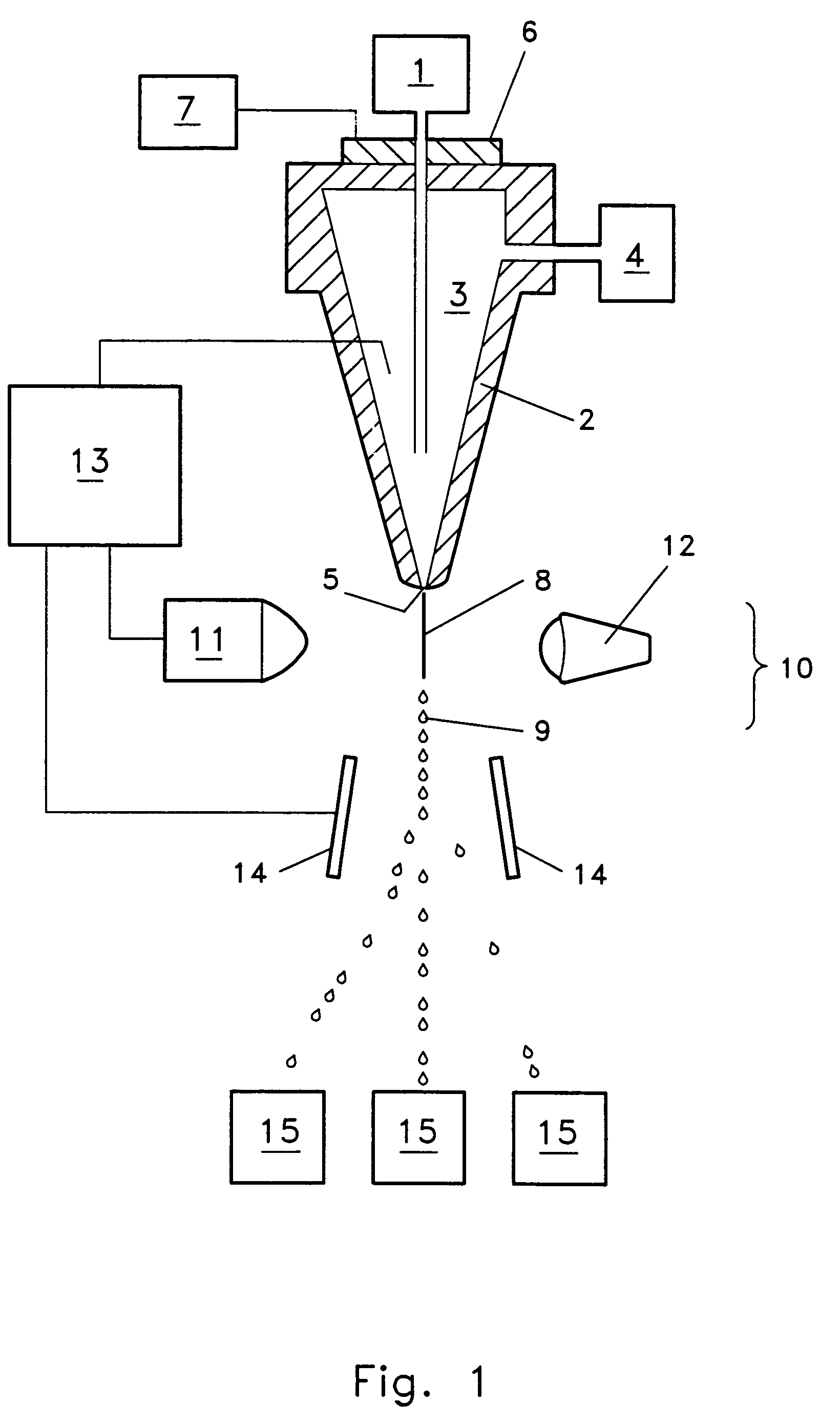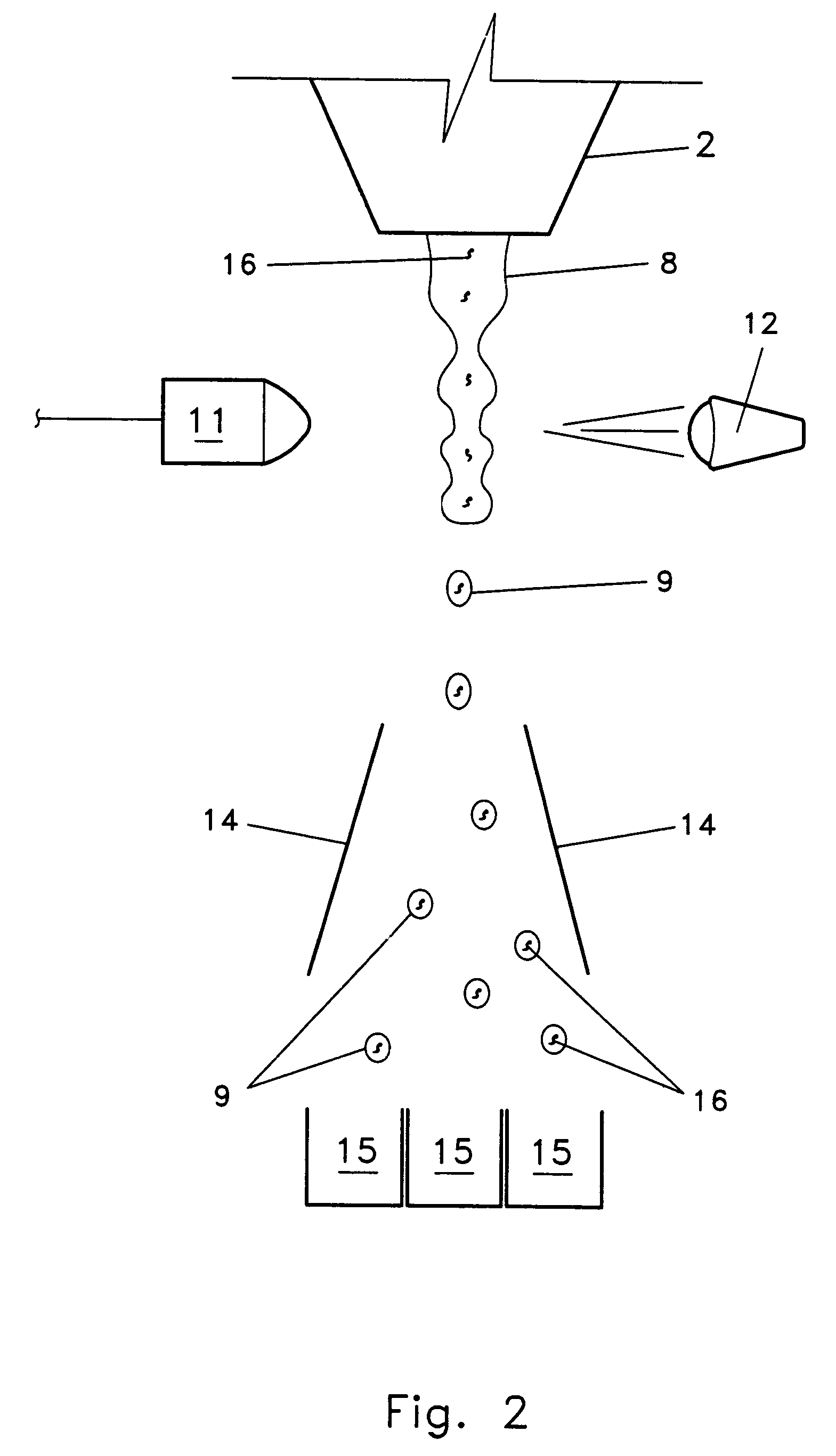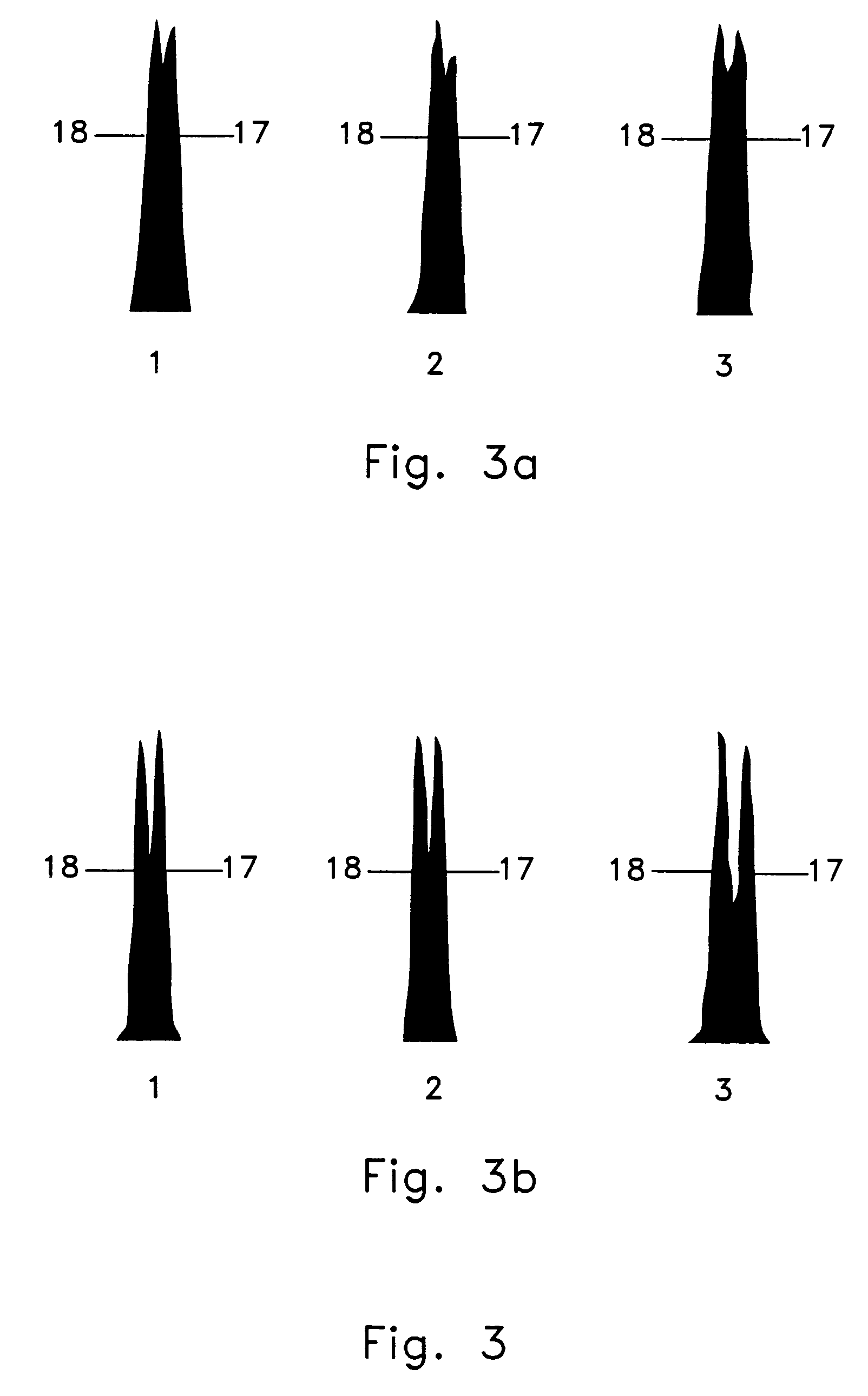High purity X-chromosome bearing and Y-chromosome bearing populations of spermatozoa
a technology of x-chromosome which is applied in the field of high purity x-chromosome bearing and y-chromosome bearing populations of spermatozoa, can solve the problems of difficult isolating highly purified populations of x-chromosome bearing or y-chromosome bearing sperm cells, low purity of spermatozoa populations, etc., to minimize the total lumens of objects exposed, minimize the coinciden
- Summary
- Abstract
- Description
- Claims
- Application Information
AI Technical Summary
Benefits of technology
Problems solved by technology
Method used
Image
Examples
Embodiment Construction
[0078]The invention involves isolated high purity X-chromosome bearing and Y-chromosome bearing populations of spermatozoa or sperm cells. High purity X-chromosome bearing and Y-chromosome bearing populations of spermatozoa can comprise populations of intact live spermatozoa, and may also comprise populations of tailless spermatozoa (sperm nuclei), or populations of other viable or non-viable forms of spermatozoa, as may be desired. While particular examples are provided that describe the invention in the context of separating intact live sperm cells each having a sperm cell head, necks, and tail, it should be understood that the technologies described can have various applications with respect to sperm nuclei as well. X-chromosome bearing and Y-chromosome bearing populations of spermatozoa should further be understood to encompass spermatozoa from any male of a species of mammal including, but not limited to, spermatozoa from humans and spermatozoa from commonly known animals such ...
PUM
| Property | Measurement | Unit |
|---|---|---|
| height | aaaaa | aaaaa |
| length | aaaaa | aaaaa |
| diameter | aaaaa | aaaaa |
Abstract
Description
Claims
Application Information
 Login to View More
Login to View More - R&D
- Intellectual Property
- Life Sciences
- Materials
- Tech Scout
- Unparalleled Data Quality
- Higher Quality Content
- 60% Fewer Hallucinations
Browse by: Latest US Patents, China's latest patents, Technical Efficacy Thesaurus, Application Domain, Technology Topic, Popular Technical Reports.
© 2025 PatSnap. All rights reserved.Legal|Privacy policy|Modern Slavery Act Transparency Statement|Sitemap|About US| Contact US: help@patsnap.com



